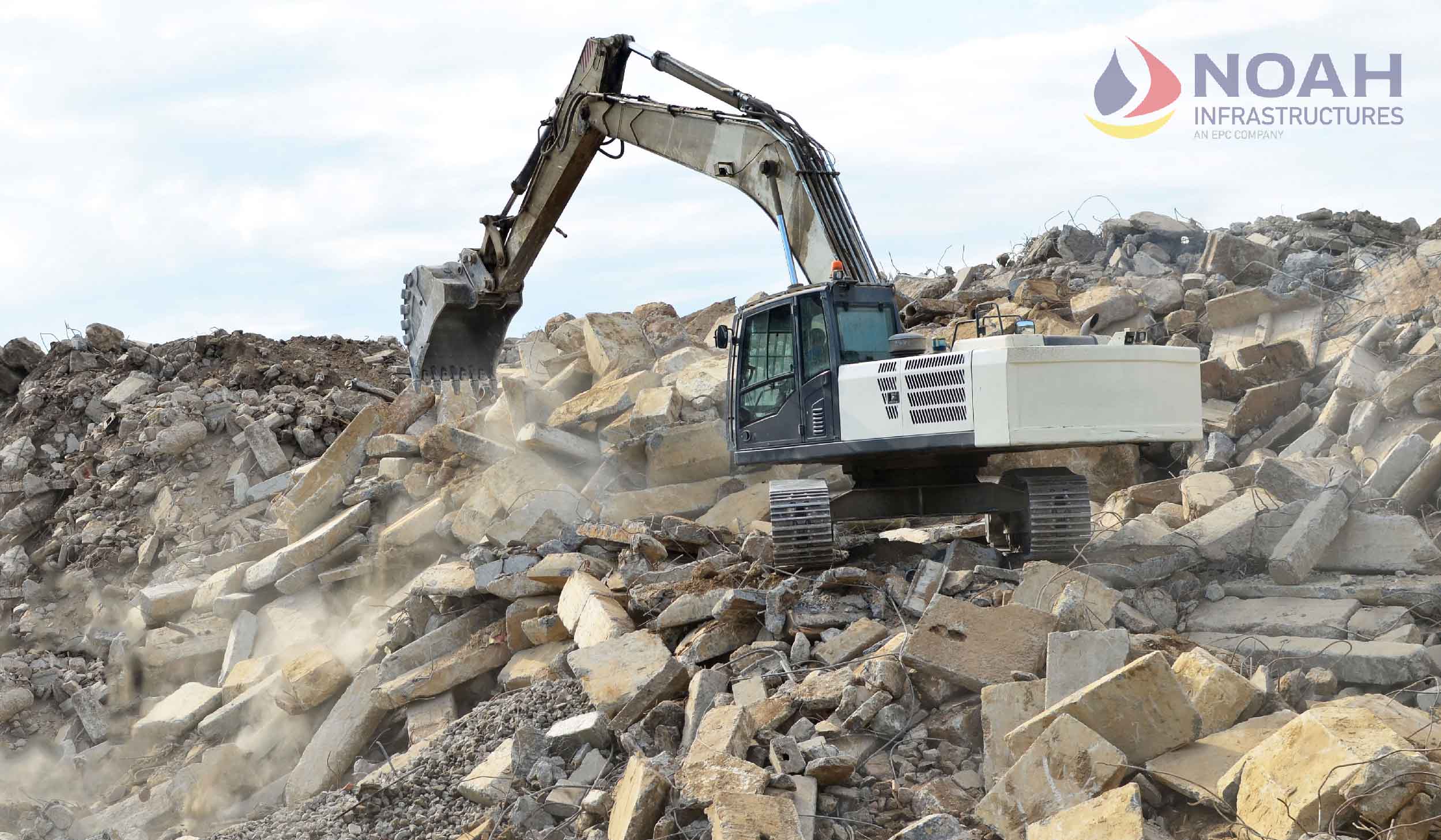C&D Waste: Understanding Construction and Demolition Wastes
Unlocking the Enigma of C&D Waste: Understanding Construction and Demolition Wastes
In the bustling landscapes of urban development, a silent contributor to the towering skylines and bustling streets often goes unnoticed. It is Construction and Demolition (C&D) waste. Behind the scenes of every new building erected and every old structure torn down lies a complex web of materials, debris, and remnants. Understanding the enigma of C&D waste is paramount. It helps navigate the challenges it presents and fosters sustainable urban growth.
Defining C&D Waste:
C&D waste encompasses a diverse array of materials. They are generated during construction, renovation, demolition, and deconstruction activities. It’s a tapestry woven from the fibers of bricks, concrete, wood, metals, plastics, glass, and other building components. These materials are integral to the construction and demolition processes. Yet, they also pose significant challenges in waste management due to their heterogeneity and sheer volume.
Unveiling the Complexity of C&D waste:
The landscape of C&D waste is multifaceted, characterized by several key features that shape construction waste management:
Heterogeneity:
One of the defining traits of C&D waste is its diversity. Each component varies in size, shape, and composition, from concrete rubble to wooden beams. This heterogeneity complicates efforts to efficiently segregate, recycle, and dispose of these materials.
Contamination Concerns:
Within the labyrinth of C&D waste lurk hidden dangers. Hazardous substances like asbestos, lead-based paints, and chemical pollutants may contaminate the materials, posing severe environmental and public health hazards if not managed appropriately.
Voluminous Nature:
The garbage generated by construction and demolition (C&D) is remarkable, especially in places that are quickly urbanizing and have a high volume of C&D activity. Handling the enormous amount of waste generated is a severe logistical difficulty for cities and towns.
Seasonal Fluctuations:
The quantity and composition of C&D trash created fluctuate as a result of the seasonal patterns that C&D activities follow. Because of this fluctuation, waste management initiatives are made more difficult. It also necessitates adaptable techniques to meet shifting demands.
Also Visit: PEB Company in Chennai
Understanding the Impacts of C&D Waste:
The unchecked proliferation can have far-reaching consequences:
Landfill Overload:
A considerable part of C&D waste ends up in landfills. It occupies valuable land space and contributes to environmental degradation. Landfilling C&D waste not only squanders resources but also exacerbates soil and groundwater contamination, which poses risks to ecosystems and public health.
Resource Depletion:
Many materials in C&D waste, such as aggregates, metals, and timber, are finite resources. Failing to recover and recycle these materials effectively accelerates resource depletion. It drives up demand for virgin resources and exacerbates environmental impacts associated with extraction and processing.
Pollution Peril:
Improper handling, construction & waste disposal can lead to air and water pollution. In particular, it leads to pollution when hazardous substances leach into the environment. Ensuring appropriate construction & demolition waste management methods is crucial. Because the discharge of toxins and pollutants can jeopardize human health and ecological integrity.
Health Hazards:
Employees who handle and process construction and demolition trash run severe health hazards. This is due to exposure to hazardous substances and contaminants. Additionally, nearby communities may be at risk of pollution exposure, highlighting the need for stringent health and safety measures in building waste management activities.
Navigating Towards Sustainability
Addressing the challenges posed by C&D waste requires a multifaceted approach:
Source Reduction:
Designing structures for disassembly and incorporating sustainable building practices can cut waste generation at the source. Strategies such as modular construction, prefabrication, and material optimization can reduce the quantity of waste generated during construction and demolition activities.
Promoting Reuse and Recycling:
Promoting the recycling and reuse of waste materials can help conserve resources, reduce landfill burdens, and lower greenhouse gas emissions. By removing materials from landfills and using them in brand-new building projects, stakeholders can lessen dependency on virgin resources and move toward a more circular economy.
Implementing Effective Waste Management Practices:
Instituting robust waste segregation, collection, and recycling systems is essential for maximizing the recovery of valuable materials from C&D waste streams. Effective coordination between stakeholders, including contractors, waste management companies, and local authorities, is crucial for ensuring the success of these initiatives.
Enforcing Regulatory Measures:
Governments and regulatory bodies are critical in establishing policies, standards, and regulations to promote responsible waste management practices. By enforcing compliance with environmental laws and incentivizing sustainable practices, policymakers can create a supportive framework for sustainable urban development.
Fostering Collaboration and Awareness:
Building partnerships between government agencies, industry stakeholders, and community organizations is essential for addressing the complex challenges associated with C&D waste. Through encouraging cooperation and spreading knowledge about the significance of sustainable waste management, stakeholders can work together to create a more resilient and environmentally friendly built environment.
Unraveling the Enigma
Construction and demolition activities are integral to urban development. However, their byproducts pose significant challenges to sustainability. By understanding the complexities of C&D waste, recognizing its impacts, and embracing sustainable construction waste management practices, stakeholders can navigate the labyrinth of waste toward a greener and more resilient future. Being the top construction company, we, Noah Infrastructures, can unlock the enigma of C&D waste through collective action and commitment to sustainability. This pave the way for a more sustainable urban landscape.

